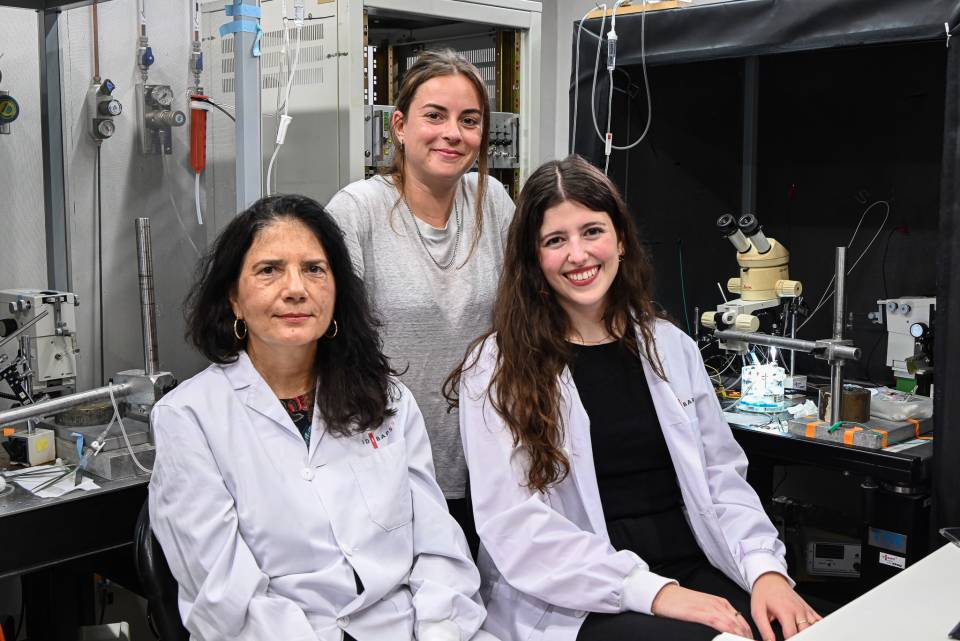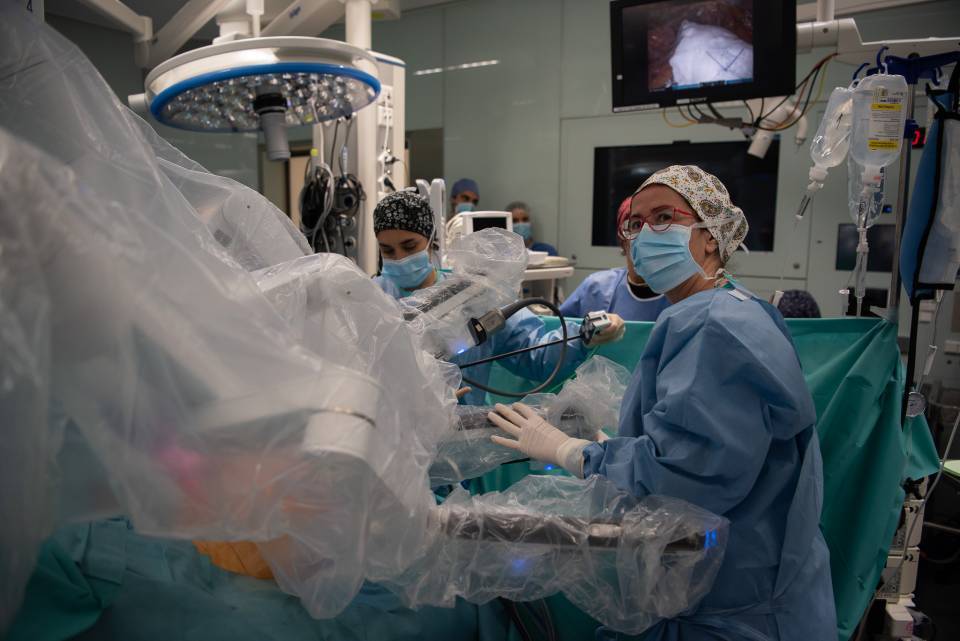A study carried out by the Clínic-IDIBAPS in collaboration with physicists from the Istituto Superiore di Sanità (Italian National Institute of Health) in Rome, and published in the journal Advanced Science, has investigated how alternating electrical fields affect cortical neural networks that generate spontaneous slow oscillations, typical of states such as deep sleep or anaesthesia. The aim was to identify the conditions under which these networks can synchronize or desynchronize, a key phenomenon in the treatment of disorders with pathological hypersynchronization patterns such as epilepsy, depression or Parkinson’s disease.
Combination of alternating and continuous current for neuromodulation
The research team, led by the IDIBAPS Systems Neuroscience research group, applied external electric fields, both alternating and continuous, with different amplitudes and frequencies to areas of the cerebral cortex that showed spontaneous slow oscillations. This allowed them to study how these neural networks responded to external stimulation and how their synchronization and desynchronization could be induced in a controlled manner.
Mavi Sánchez-Vives, head of the research group and project coordinator, explained that, “We propose a new robust protocol that combines alternating and continuous electric fields to control cortical dynamics, facilitating more reliable induction of synchronization or desynchronization of activity, a key aspect in treating disorders characterized by pathological synchronies.”
According to Joana Covelo and Martina Cortada, IDIBAPS researchers and co-authors of the study, the experiments revealed that cortical networks with slow oscillations can synchronize with alternating electric fields when these are applied within a specific range of frequency and amplitude. However, when the frequency of the external field is slightly higher than that of the spontaneous oscillations, the system enters a desynchronization regime, a behaviour that could be exploited to break the hypersynchronization patterns present in some neurological disorders. In addition, the introduction of a direct current component modulates the effect of alternating fields, allowing for more precise intervention.
These experimental observations were faithfully reproduced using a computational model developed by Italian collaborators, reinforcing the idea that neural networks can be modulated in a predictable manner with specifically designed electrical stimuli.
This work was made possible thanks to the Spanish Ministry of Science, Innovation and Universities, the European Research Council (ERC), the NEMESIS project and the Ministry of Research and Universities of the Generalitat de Catalunya.




